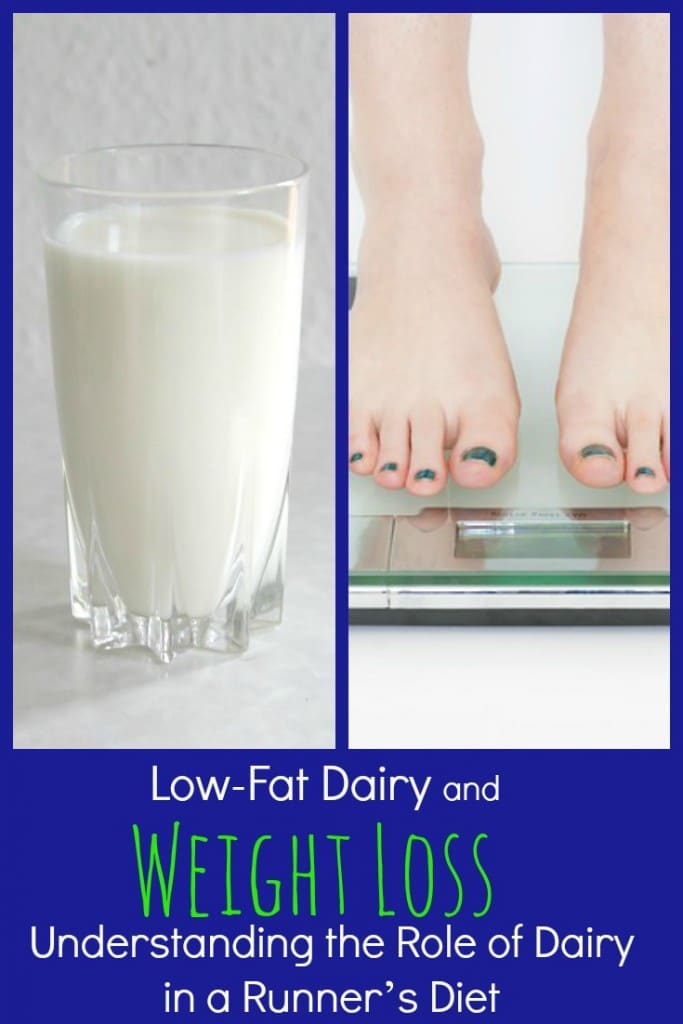 Most runners recognize the value that low-fat dairy products can bring to the sports nutrition diet. For instance, some dairy products are good sources of protein and carbohydrate; they are rich in calcium and vitamin D, and they taste great.
Most runners recognize the value that low-fat dairy products can bring to the sports nutrition diet. For instance, some dairy products are good sources of protein and carbohydrate; they are rich in calcium and vitamin D, and they taste great.
Unfortunately, dairy sometimes gets a bad reputation and as such, has been completely cut out of popular diet plans.
While it is true that some dairy products like flavored yogurt and frozen yogurt are high in added sugars, and other products like cheese and whole milk are high in saturated fat, dairy can still provide many befits to runners, especially those looking to lose or maintain weight.
While it will certainly pay off to be a little more selective with your dairy choices, today’s article should give you some additional reasons to keep dairy a regular part of your diet.
Dairy and weight loss
Although the typical goal for weight loss is an overall loss of fat tissue, a significant loss of lean tissue often occurs as well. A loss of lean tissue has been suggested as one reason why most weight loss plateaus on most weight loss programs and may also be responsible for weight regain despite improved dietary and exercise behaviors.
The reason this occurs is that lean tissue, or muscle mass, is a metabolically active tissue, meaning it keeps your engine running even when you aren’t working out. Over the past decade there has been a lot of research into the roles that calcium and dairy products play in weight loss and maintenance and findings are promising as they relate to fat loss and lean tissue retention.
A number of weight loss trials in humans have been able to link the consumption of calcium-rich dairy products with greater weight loss and fat loss when combined with an energy-restricted diet and exercise routine.
A recent study by Josse et al. investigated the effects that diets varying in protein and calcium content (from dairy foods) would have on weight loss, and more importantly the composition of weight loss, in overweight and obese women on an energy-restricted diet, which included daily exercise. Findings from this randomized trial supported the hypothesis that consuming a high protein, high dairy diet (low-fat dairy) was more effective at promoting fat loss and retaining lean muscle mass.
Although not all studies have come to the same conclusion, it is worth looking into the mechanisms that may have led positive findings in others.
One suggested role for calcium involves its effect on energy metabolism. Dietary calcium may increase fecal fat excretion by forming insoluble soaps in the intestines, resulting in a slight net energy loss. Simply speaking, calcium may prevent some fat from being absorbed. The caveat is that calcium and fat must be consumed in the same meal.
Other suggested mechanisms for fat loss with less conclusive evidence include an increased thermic-effect of food, increased lipolysis (body fat breakdown), and decreased lipogenesis (formation of new fat).
Lucein and fat reduction
To go a step further with these findings, there have been some studies that observed fat loss from consumption of dairy foods compared with consumption of supplemental calcium.
Results from these studies showed that although both resulted in fat loss (when on an energy-restricted diet), greater fat loss was observed with dairy foods. So despite the suggested effects that calcium is thought to have on fat loss, it appeared there must be some other component in dairy that contributed to these results. That component may be leucine.
Leucine
Leucine is one of nine essential amino acids, which means is cannot be produced in the body and must be obtained through the diet. Furthermore, leucine is one of three branched-chain amino acids (BCAAs).
BCAAs are often used as supplements to treat or ease symptoms of a number of health conditions as well as by athletes to prevent fatigue, reduce muscle breakdown, and enhance performance. Leucine is most easily recognized in supplement form but it is also abundant in all types of protein, most notably in the whey protein in dairy products.
Leucine is the only amino acid that can stimulate protein synthesis in the muscle. Leucine acts as a nutrient signal for muscle metabolism by activating protein synthesis and suppressing protein breakdown through a number of complex metabolic processes involving the insulin signaling pathway.
The result of leucine ingestion is a growth in muscle tissue when combined with resistance exercise, or maintenance of lean muscle mass during periods of energy restriction, such as dieting or intense endurance exercise.
Leucine’s role in exercise
Leucine appears to play a role in energy balance and lipid metabolism as it relates to weight loss, but it can also be a very beneficial dietary component even for athletes who are not restricting energy or trying to lose weight. One example is leucine’s role in glucose management during endurance exercise.
Amino acids that are oxidized during prolonged endurance exercise serve as a carbon source for gluconeogenesis, or the production of glucose from non-carbohydrate sources. Glucose produced in this manner helps maintain normal blood sugar levels and spares muscle glycogen.
Furthermore, BCAAs like leucine stimulate the recycling of glucose through the glucose-alanine cycle. Alanine can be converted to glucose by the liver and sent back to the muscle to be used as fuel. This recycling process thus has a protein-sparing effect, since it limits the amount of protein that must be broken down for carbons to produce glucose, in addition to its glycogen-sparing effect.
Therefore, high levels of leucine can be beneficial during exercise by maintaining blood glucose levels while sparing protein and glycogen.
Leucine also has beneficial roles when consumed post-exercise.
To begin with, research has shown that beverages containing both protein and carbohydrate are retained better, and thus are better at re-hydrating, than beverages that only contain carbohydrate.
Whey protein, which is found in milk products and is high in leucine, has been shown to stimulate post-exercise muscle synthesis more efficiently compared to other protein sources due to its rapid digestibility (gets to the blood quicker) and leucine’s role in stimulating muscle protein synthesis.
Nab Our FREE 4-part Weight Loss Email Course
You’ll learn the science behind losing weight and still running well so you can understand the “why” of weight loss for long-term success.
Lessons include why simply running more and eating less won’t help you lose weight, why your weight fluctuates each day, and the best way to distribute calories throughout your day. Plus more…
Where to find leucine
Whey protein has a higher leucine content than other proteins like wheat or soy and thus is more efficient at activating protein synthesis. In a study of muscle protein synthesis at rest and after resistance training, whey protein promoted protein synthesis by 18% and 31%, respectively, when compared with soy.
Research suggests that 2.5g of leucine post-exercise will be sufficient to stimulate muscle protein synthesis, reduce muscle soreness, and aid in overall recovery. The best sources of whey are dairy products and protein powders. The following chart shows the leucine content of different protein sources:
Source Leucine, g/100g
Leucine, g/20g
Soy protein isolate 8.2 1.64
Egg protein 8.4 1.68
Casein 8.9 1.78
Milk protein isolate 10.3 2.06
Whey protein isolate 12.2 2.44
Whey protein hydrolysate 14.2 2.84
Milk is approximately 80% casein and 20% whey.
Although the rapidly digested whey protein results in faster stimulation of muscle protein synthesis, casein is digested more slowly and results in higher levels of protein synthesis after the whey has been metabolized. Therefore, there is some reasoning for ingesting the two together.
Chocolate milk is a good example as the two complement each other well in promoting muscle protein synthesis throughout the day and night.
Lactose Intolerance
The prevalence of lactose intolerance in the US is unknown and can’t be calculated with the available data but it is thought to be quite high, especially within certain ethnicities. Runners seem to have more GI issues than other athletes, perhaps due to the constant jostling of the stomach or the duration and intensity of exercise.
Whatever the reason, I understand that some athletes simply prefer to avoid dairy. Those athletes should be sure to get sufficient calcium and vitamin D from other sources.
It should also be noted that milk isn’t the only option. While milk, evaporated milk, and dry milk products have the highest content of lactose, foods like yogurt and cottage cheese may be more easily handled.
Additionally, you can try whey protein isolate powder and other types of protein powders to see what works best.





5 Responses
Hi, I have recently swapped Cows milk for Almond milk. I decided to do this as I hear it would improve my skin and actually the almond milk has lots of protein in too. I find it a great substitute However I do know that it contains less Leucine. I’m going to try have some whey protein after reading this article as well to compensate. Thanks! So make whey protein shakes with almond milk is perfect I guess!
Catherine, I thought almond milk had like 0-1g protein. Pretty sure it does. I uses to drink it, but switched to regular raw milk for the protein content as I run & cross train frequently & can’t afford empty calories.
Great article, very informative!
Glad you found it helpful Farah! Almond milk does have very low protein content, and regular milk is definitely the better choice for that reason.
I’ve been sticking to 2% or even full fat yogurt as I find the extra fat promotes satiety and I end up eating less overall. Is there really that much extra fat in 2% or full fat dairy (outside of half and half and full cream)? How do more full fat dairy products differ from low fat dairy in respect to the points made in your article?
My weight has definitely plateaued and I’d like to lose more, but I still do seem to be getting leaner in the middle in spite of this.
Hi Rob, thanks for sharing. It sounds like what you are doing is working for you, especially if you are beginning to lean up. There is not a huge difference in the fat content, and especially if you said it works with satiety, it is a worthwhile exchange as it stops you for reaching for something in excess of the calories you will add from the full fat dairy. Sorry i cannot help you with more than this!